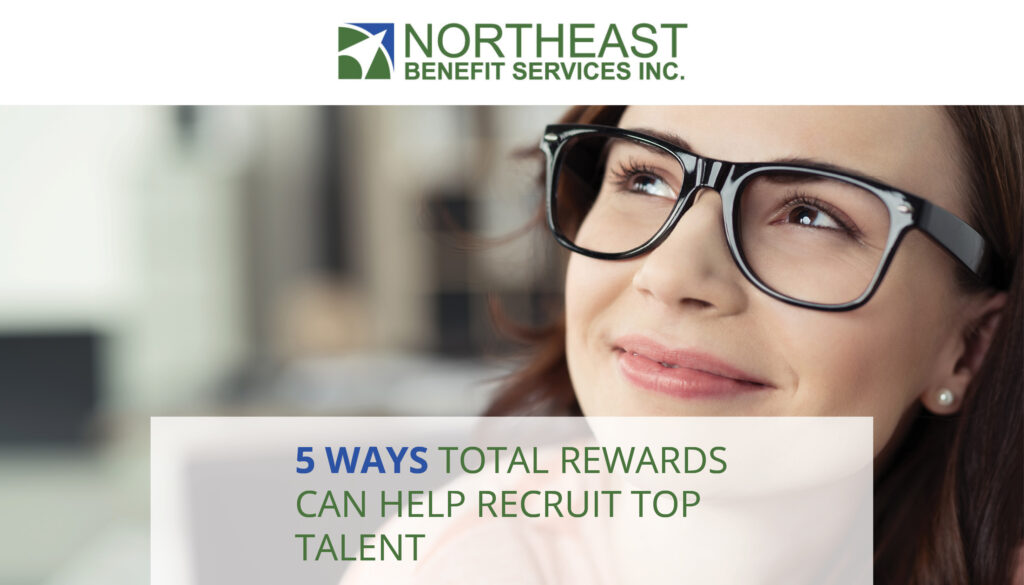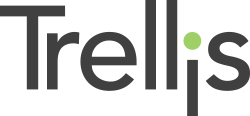
A good total rewards program helps you attract and retain the best possible talent for your organization. Add a great workplace culture and environment and you could be on your way to becoming an employer of choice among job-seekers.
What is a total rewards program?
A total rewards program is adopted by a company that provides benefits for its employees including:
- —base pay, overtime, bonuses
- —flexible scheduling, remote work opportunities
- —health, life, dental and vision insurance, retirement plan, and voluntary benefits such as wellness
- —feedback regarding performance and areas needing improvement, employee recognition programs
- —performance development planning, career paths, internal and external training, tuition reimbursement
However, the playing field has changed with the COVID-19 pandemic.
We’ve gone from record employment to record unemployment. That should make it easier to recruit top talent, right? It might—but only if your benefits are up to the challenge.
First, confirm that your pay and benefits are competitive. Compensation is the first step in preparing a comprehensive total rewards program; however, it is not the whole picture when it comes to winning those all-star candidates.
According to Deloitte’s 2019 Global Human Capital Trends survey, perks and pay aren’t what matter most to many employees—it’s personalized rewards that help meet their needs. Furthermore, only 11% of companies in Deloitte’s survey felt their rewards strategy was highly aligned with their organization’s goals.[1]
What does this mean for you? You might have some gaps to fill between the components of your total rewards program and employee needs. And since the survey was conducted in 2019 before COVID-19 appeared, your future employees’, and thus applicants’, needs are evolving.
What are the key benefits to consider?
Here are five important benefits you might want to include in your total rewards program during this work from home (WFH) new normal:[2]
- Your applicant needs to know they will be covered if they become ill. Without this type of coverage, they could face financial hardship in covering expenses. In addition, short and long-term disability benefits could kick in if the illness persists.
- According to the Bureau of Labor Statistics, employees in private industry had an average of 7 days of sick leave for 1 year of service in 2018.[3] Given recent events, this may not be enough because, with the new coronavirus, recovery often takes significantly longer than 7 days. Seven days, and only after 1 year of service, may not be adequate for your new hire.
- WFH has been encouraged—even required—because of social distancing and shelter-in-place policies to reduce the spread of COVID-19. What is your applicant’s attitude toward working alone?
- WFH may be beneficial in many ways, but along with the accompanying isolation, it can be mentally exhausting. An Employee Assistance Program can help to alleviate the stress and distress caused by WFH isolation.
- Financial wellness programs seek to help employees with their #1 stressor – finances. The program can help them prepare for unexpected emergencies, student loan debt, future college savings, and/or retirement. With the pandemic, financial wellness has become even more important for employees facing additional challenges such as higher medical bills or the possibility of losing a job. Applicants and new hires may find it reassuring that such a program exists should they need it.
Does your total rewards program contain these benefits?
If there are opportunities for improvement, work with your HR and benefits teams to discuss ways to adjust benefits within the program. It will take some planning, but it could be worth the effort if it means being the employer of choice for top talent. In considering changes:
Top job seekers are not only looking for a good salary but also excellent benefits. To recruit the best, you have to be the best, and part of that is having an outstanding total rewards program.
To learn how your retirement plan compares to other similar firms, contact us to discuss a benchmarking report.
Lawrence M. Kavanaugh, Jr. AIF, CRPA, CLU, ChFC
Northeast Benefit Services, Inc.
950-A Union Road, Suite 31
West Seneca, NY 14224
info@nebstpa.com
Phone: (716) 674-7200 x237
1200 Jefferson Road, Suite 302
Rochester NY 14623
info@nebstpa.com
Phone: (585) 214-0030 x237
[1] Deloitte Insights, “Employee Rewards: What Do Employees Value Most?” 2019.
[2] Kathryn Mayer, Human Resource Executive, “8 benefits employers should zero in on during the COVID-19 pandemic,” March 24, 2020.
[3] U.S. Bureau of Labor Statistics. “Private industry workers with sick leave benefits received 8 days per year at 20 years of service,” March 8, 2019.
